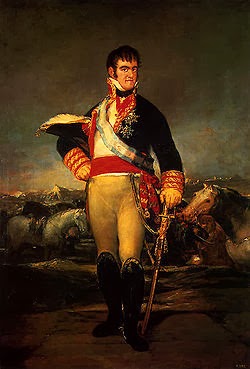SOURCE 1
Here you have a comment about the objectives and achievements of Napoleon:
"Napoleon was a real man as well as a legend. It was Napoleon himself who helped to create this legend. He wrote his memoirs while exiled on St. Helena between 1815 and 1821. He tells us his aim was to defend the Revolution and consolidate its gains. He emerges as a champion of equality, a supporter of popular sovereignty, a destroyer of privilege and a lover of peace. According to Napoleon, his vision was to create a United States of Europe. He wanted to free Europe from tyranny, oppression and despotism. As we know full well, this never happened. However, he did help to consolidate many gains of the Revolution. But, such a view ignores the downside of Napoleon -- his repression of liberty, the general subversion of republicanism, and the oppression of conquered peoples.
Historians would agree on two things about Napoleon. First, he was an extraordinary man, a self-made man. His drive, will, military genius and charisma made him a great man, a world historical figure, a man who made history. Machiavelli would have found Napoleon to be his perfect prince. Second, by spreading revolutionary ideals and institutions, Napoleon made it impossible for the restoration of the ancien regime. After Napoleon there was no turning back: feudalism was dead, society was secularized, the modern nation state replaced the dynastic state, and the bourgeoisie became the new class of privilege and status."
From: http://www.historyguide.org/intellect/lecture15a.html
SOURCE 2: In his speech during the coup d'etat of 1799 he said to the Assembly:
"Frenchmen, without a doubt, you will see in what I did that I am a soldier who supports liberty and am a citizen who is devoted to the republic"
SOURCE 3
1. What did Napoleon mean in his speech?
2. What is the image this cartoon wanted to transmit?
2. Did his words correspond whith the meanig of the image?




